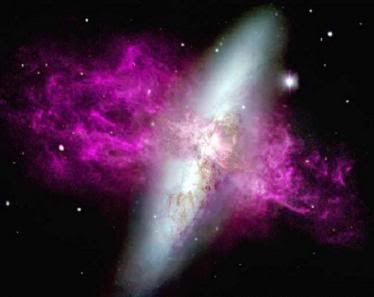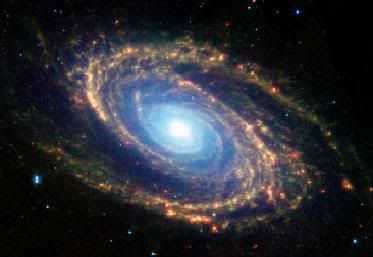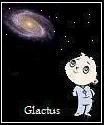Post by glactus on May 17, 2011 9:45:47 GMT

Messier 82 galaxy
Messier 82 (NGC 3034),is a prototype starburst galaxy about 12 million light-years away in the constellation of Ursa Major. Apparent magnitude is 8.4. The starburst galaxy is five times as bright as the whole Milky Way and one hundred times as bright as our galaxy's center.
In 2005, the Hubble Space Telescope revealed 197 young massive clusters in the starburst core. making it a high-density environment. Throughout the galaxy's center, young stars are being born 10 times faster than they are inside our entire Milky Way Galaxy.

Messier 81 galaxy
Messier 81 (NGC 3031) or Bode's Galaxy) is a spiral galaxy about 12 million light-years away in the constellation of Ursa Major. Apparent magnitude is 6.8. Because of its proximity to Earth, its large size, and its active galactic nucleus which harbors a supermassive black hole, Messier 81 is a popular galaxy to study in professional astronomy research. The galaxy's large size and relatively low apparent magnitude (lower magnitude implies higher brightness) also make it a popular target for amateur astronomy observations. Messier 81 is the largest galaxy in the M81 Group, a group of 34 galaxies and is gravitationally interacting with Messier 82 and NGC 3077

NGC 3077 galaxy
NGC 3077 is a smaller member of the M81 Group about 13 million light years away in the Constellion of Ursa Major. Apparent magnitude is 10.6. The galaxy was discovered by William Herschel on November 8, 1801. It looks much like an elliptical galaxy but is peculiar for two reasons. First, it shows wispy edges and scattered dust clouds that are probably a result of gravitational interaction with its larger neighbors, M81 and M 82s Second, this galaxy has an active nucleus, probably a supermassive black hole.

Messier 81
Credits: These are non copywrite images.
Text by Wikipedia/Glactus


